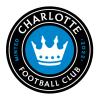You know Lionel Messi made his triumphant return for Inter Miami. You know the LA Galaxy stormed back to earn all three points against LAFC in the latest El Tráfico. You know FC Cincinnati and the Columbus Crew played to a hard-fought draw in Hell is Real.
Beyond the sea of GOATs and recent rivalries is a set of under-the-radar stories helping define the last stretch. Today, I’m diving into two such storylines from the Western Conference and another pair from the Eastern Conference.
If you want to impress your groupchat with high-quality takes as the Audi MLS Cup Playoffs field takes shape, this column is for you.
What's behind Colorado’s sustained success?
The LA Galaxy aren’t the only Western Conference club in the middle of an astonishing turnaround. Sure, the Galaxy have gone from second-worst to first. But the Colorado Rapids? They’ve had the largest points-per-game increase from 2023 to 2024 in the West at +0.89. Zooming out even further, they’re second in the entire league in their points-per-game improvement from last year to this year, only behind Inter Miami.
Despite Real Salt Lake’s wheeling and dealing (more on them in a moment), some strong results from Seattle Sounders FC and Houston Dynamo FC, and Vancouver Whitecaps FC recently adding a third DP in Stuart Armstrong, it’s the Rapids who sit just behind the two Los Angeles clubs in the Western Conference standings.
What’s behind their success? Well, the Rapids have quietly become one of the best attacking teams in MLS.
They’re sixth in MLS in goals per 90 and third in xG per 90, according to FBref. Now, a big chunk of Colorado’s goals have come from the penalty spot: they’re first in the league in penalties scored per 90 at 0.29. While they shouldn’t expect to have a penalty call in their favor three out of every 10 games for the rest of this year, Chris Armas’ team does an excellent job of forcing the hands of opposing defenders (and referees) by applying regular attacking pressure in key areas. Per FBref, they’re third in passes into the final third and sixth in passes into the box.
Playing out of their narrow 4-2-3-1 shape, few teams in MLS make life more miserable for opposing center backs than the Rapids.
With a roster short on game-changing wingers, Armas and Co. have done the right thing by stacking the middle, looking sharp on the break, and attacking with wave after wave. It’s that gameplan and execution that’s helped remake Colorado in 2024.
What’s wrong with RSL?
It’s all unraveling for Real Salt Lake.
They’ve lost four of their last six regular-season games and their grip on the No. 4 seed in the Western Conference – the last spot that guarantees you home-field advantage in Round One of the postseason – could slip at any moment. How did a team that looked firmly in the Supporters’ Shield race a few months ago find themselves staring a chasing pack right in the face?
Even if things started to slip just before the summer transfer window shut, it would be foolish to look anywhere other than RSL’s action in the market for the root cause of their struggles.
Andrés Gómez moving from RSL’s right wing to Ligue 1’s Rennes for a reported eight-figure fee is exactly when things started to take a turn. After some minor injury problems and a brief suspension, Chicho Arango already wasn’t scoring like he did to start the season. However, with Gómez, a Best XI-caliber winger who had 13 goals and seven primary assists in 2024, drawing attention and creating space for his Colombian counterpart, it was only a matter of time until Arango found his wheels again.
But when a Godfather offer slides across your desk for an ambitious young player, how can you refuse?
RSL did their best to restock as quickly as possible, adding Dominik Marczuk as a replacement U22 Initiative winger (along with DP Diogo Gonçalves, though the club planned to sign a DP No. 10 even before Gómez's exit). Still, looking at the with-and-without Gómez splits is incredibly revealing. Before the winger's last game for Salt Lake, they averaged 2.04 goals and 1.69 xG per game, according to American Soccer Analysis. In the four games since his departure, they’ve averaged one goal and 1.02 xG per game.
With so little time left in the season, Pablo Mastroeni is trying to rebuild the plane as he’s flying it. There’s hope for RSL – the new pieces are talented and should gel before too long. But the growing pains? They’re painful. Maybe even painful enough to cost them a trophy this season.
What’s wrong with Charlotte?
Uh, has someone tried turning Charlotte FC off and back on again? It wasn’t all too long ago Dean Smith’s team seemed ready to fight for the fourth spot in the East. And yet, with just one win in their last eight regular-season games, Sir Minty’s Boys are in real danger of dropping into the Wild Card spots.
There are several things at play with Charlotte’s extended downturn in form.
First, they’ve hit an absolute murderer’s row of opponents in their last eight games. Since Charlotte’s slump started on June 29, they’ve played Houston, Inter Miami, FC Cincinnati, Columbus Crew, New York Red Bulls, and a reinvigorated Atlanta United (or, at least they were reinvigorated on that particular August evening). With a truly elite, deep squad with talent at every position, it’s not a huge surprise Charlotte tripped towards the beginning of that stretch of games.
But why have they kept tripping? Well, let me hand the mic over to Smith after his team’s 2-1 loss to CF Montréal this past weekend.
"We can’t give stupid goals away."
In their last eight matches, Charlotte FC have allowed 1.38 goals per game. That’s up from a league-leading one goal conceded per game in their first 20 matches of 2024. Teams have started to pinpoint weaknesses in their 4-4-2 defensive structure – the fullbacks aren’t especially mobile, and neither is Tim Ream. Charlotte have added some new attacking pieces, too, which has shifted the entire balance of the squad.
Toss in the brutal schedule and you’ve got the version of Charlotte FC that we see before us – a team desperate to reestablish their defensive identity.
What’s behind Orlando City’s form?
It’s no coincidence that Oscar Pareja’s decision to shift Martin Ojeda into the No. 10 spot and move Facundo Torres into the halfspaces has aligned with Orlando City’s red-hot run. Ever since Pareja made that call back at the beginning of July, Orlando City have looked so much better. They’ve only lost one regular-season game in that time, going 6W-1L-1D.
Torres has so rarely been comfortable operating through the middle for Orlando. Instead, he’s been more effective shaded towards the right side, where he can combine with the fullback and find shots.
According to American Soccer Analysis’ goals added metric (g+), which calculates how a player’s touches impact their team’s chances of scoring and conceding, the Uruguayan went from averaging -0.05 g+ per 96 minutes to +0.11 since his positional switch. On a per-game basis, Torres has more than doubled his shots, doubled his xG, and has nearly maintained his xA.
Ojeda, for his part, has seen improvement on the back of this positional swap. His g+ is up, his xG is steady, his goals are up, and his xA is up by more than 33%.
With an incredibly steady defense anchoring Orlando City and the parts fitting together higher upfield, the Lions are scary right now. Still, not all of their improvement has come from within. They’ve also had the benefit of rolling some bad teams in recent weeks. In Orlando City’s fantastic eight-game stretch, their wins have come against… Toronto, D.C., New England (x2) and Nashville (x2). Their four other wins in 2024? Austin, Philly, San Jose and Chicago.
Upcoming clashes with the Columbus Crew and FC Cincinnati should give us more clarity on Orlando’s contender status.

















